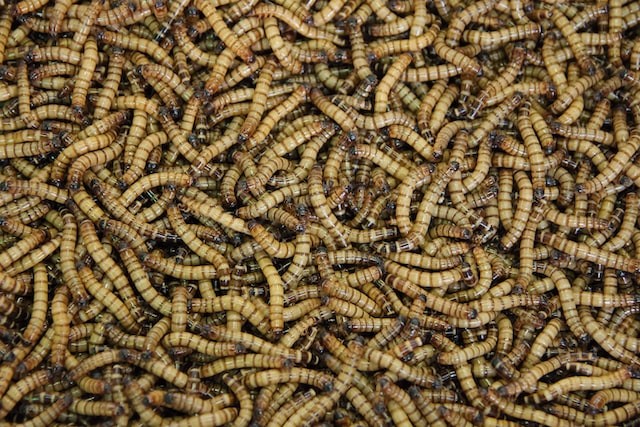Scientists have discovered that insects may be transformed into flavors that resemble meat, helping to offer a more sustainable alternative to typical meat options.
There are 2,100 species of edible insects in the globe, according to the Food and Agriculture Organization of the United Nations (FAO) (out of a total of an estimated 900 thousand).
According to researchers, at least 2 billion people, of whom the majority reside in Asia, Africa, and South America and a few nations in Europe, consume insects as part of their traditional diets.
Insects adds meaty flavor to meals-benefit the environment
 (Photo : Robert Gunnarsson/Unsplash)
(Photo : Robert Gunnarsson/Unsplash)

Researchers have cooked mealworms, the larval phase of the yellow mealworm beetle, in sugar and discovered that perhaps the flavor is like that of meat and may one day be added to convenience foods as a source of protein, as per The Guardian.
Mealworms have the potential as a food source for people to help get the instantly recognizable flavors of meat without the adverse effects on the climate, as well as direct air and water pollution, from raising beef, pork, and other animal-based foods.
Mealworms have primarily been used as snacks for pets or as bait while fishing up until now.
According to In Hee Cho, a researcher at Wonkwang University in South Korea who conducted the study, insects are a nourishing and healthful source of food with high amounts of fatty acids, vitamins, minerals, fiber, and high-quality protein, which would be similar to that of meat.
Researchers believed that using mealworms as a taste that resembles meat may help close this gap.
The results of the new study, which will be presented to the American Chemical Society this week, showed that the flavors were produced when mealworms were heated with sugars.
A third of all greenhouse gas emissions worldwide are attributed to the production of food, with the majority of all these emissions coming from the breeding of livestock for meat.
Avoiding meat and dairy products, according to scientists, is the single best strategy to lessen our influence on the environment.
Insects can be raised in large quantities in small spaces with such a fraction of the pollution of traditional meat.
Also Read: Can Insects Be Potential Food Source in Times of Climate Change?
Common edible insects
Researchers at the University of Wageningen claimed that 2,100 different bug species are regularly used as food sources throughout the world.
Only six common edible bug species, nevertheless, are currently raised for commercial purposes, as per Insect Gourmet.
House cricket is predominantly distributed over the world because of human activities. This species can be mass grown, and the resulting adults are used to create protein, which has attracted widespread attention due to its potential for the creation of goods that people and other animals, including pets, may eat
Numerous plants all over the western globe depend on the European honeybee to pollinate them.
A crucial function of the honeybee, in addition to pollination, is honey production. The use of honeybee larvae as human food is a far less well-known element of honeybee production.
The mopane caterpillar can be found all over southern Africa. The locals consider the caterpillars a significant source of food since they have a protein content similar to soybeans.
African palm weevil is widespread and is regarded as a pest because it infests palm palms. Harvested and consumed as food are its larvae.
Yellow mealworms were once considered a pest, the capacity to mass-produce this species had led to a change in perception because of the usage of its larvae as food for both humans and animals.
The larvae can be purchased alive or dried and are rich in protein and fat.
Related Article: High Consumption of Bugs May Have Positive Impacts on the Environment
© 2024 NatureWorldNews.com All rights reserved. Do not reproduce without permission.





